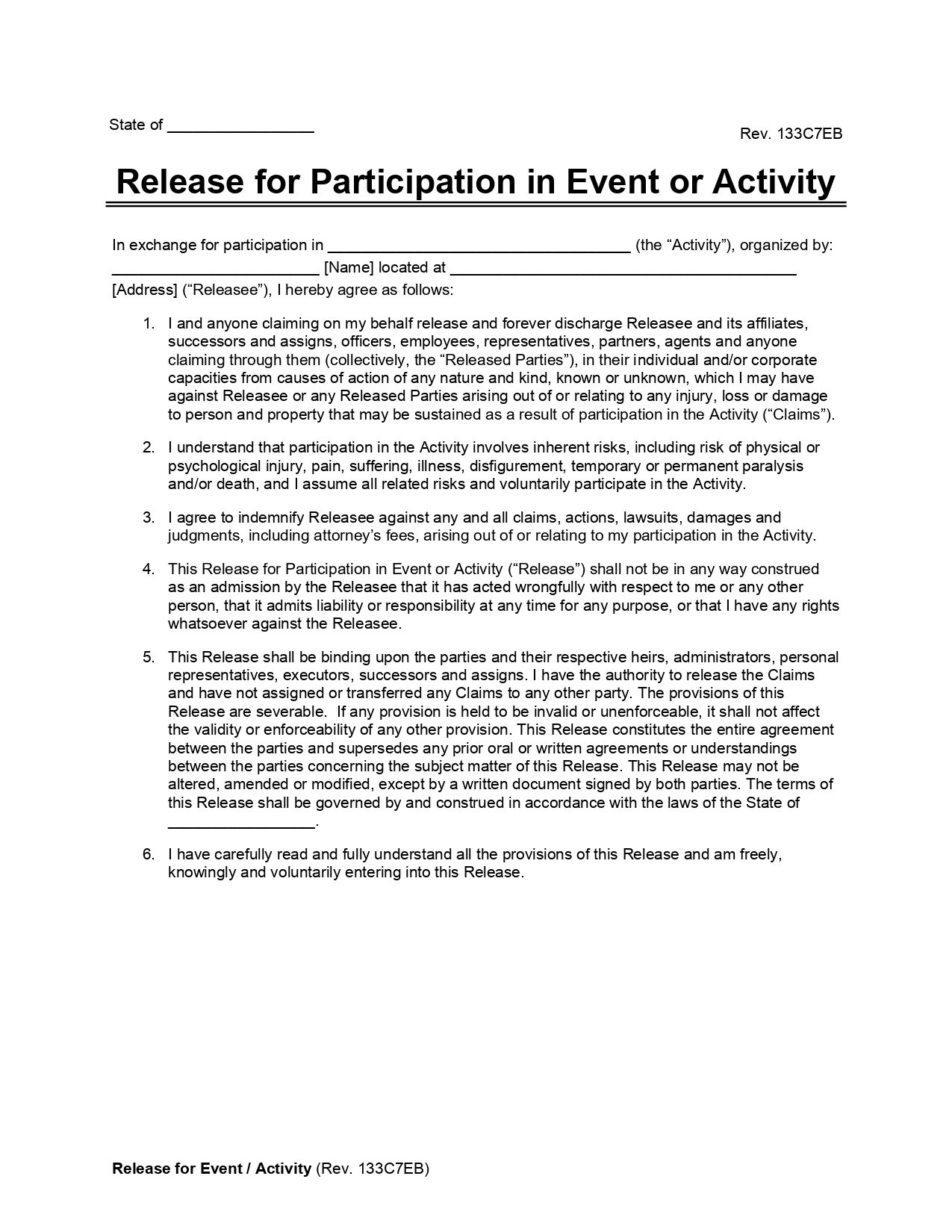An activity waiver and release form is a legal document that outlines the risks associated with participating in a particular activity and releases the provider from liability should an accident or injury occur. This form is commonly used by businesses, sports teams, and organizations that offer activities involving a certain degree of risk.
By signing the waiver, participants acknowledge that they understand the potential dangers associated with the activity and agree not to hold the provider responsible for injuries or damages that may occur.
This document is an essential tool for businesses that facilitate risk-related activities and helps protect them from legal claims arising from accidents or injuries.
When to Use
- Before participating in an activity that involves a certain degree of risk, such as sports, adventure sports, and outdoor activities.
- When offering activities as part of a business or organization, such as fitness classes, gym sessions, or team-building events.
- When organizing events involving potentially hazardous activities, such as obstacle courses, bungee jumping, or zip-lining.
- When renting out equipment that could pose a risk to the user, such as bicycles, skateboards, or climbing gear.
What to Include
When creating an activity waiver and release form, it is essential to include the following elements:
- Identification of the parties involved, including the releasor and release. Acknowledgments from the releasor that they understand the risks involved and agree to assume those risks.
- A statement that the releasor is releasing the releasee from claims or damages that may arise from participation.
- An indemnification clause, in which the releasor agrees to indemnify the releasee against claims, lawsuits, damages, and judgments arising from their participation.
- A severability clause, stating that if any provision of the release is found to be invalid or unenforceable, it will not affect the validity of the remaining provisions.


